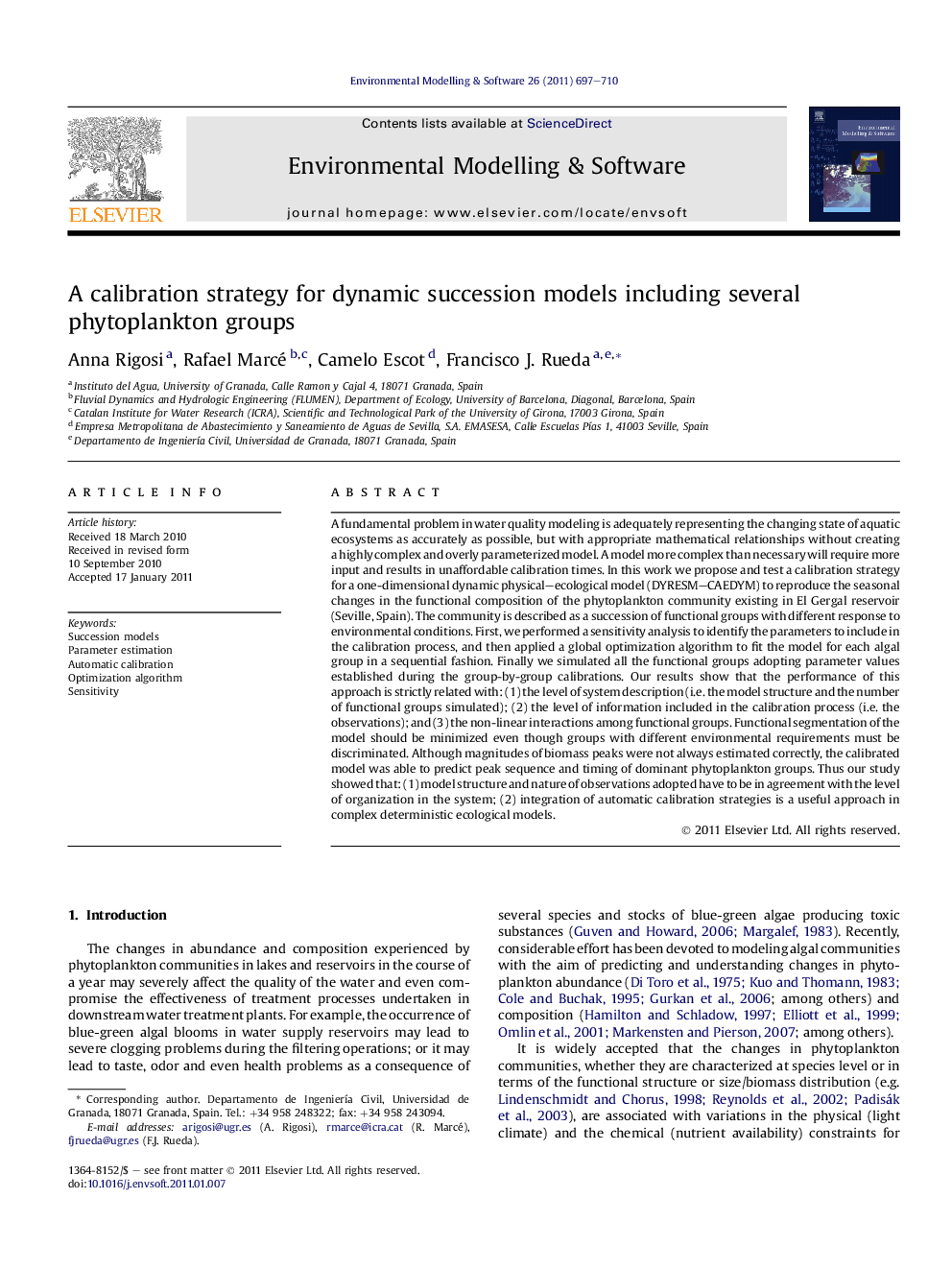| کد مقاله | کد نشریه | سال انتشار | مقاله انگلیسی | نسخه تمام متن |
|---|---|---|---|---|
| 569264 | 876565 | 2011 | 14 صفحه PDF | دانلود رایگان |

A fundamental problem in water quality modeling is adequately representing the changing state of aquatic ecosystems as accurately as possible, but with appropriate mathematical relationships without creating a highly complex and overly parameterized model. A model more complex than necessary will require more input and results in unaffordable calibration times. In this work we propose and test a calibration strategy for a one-dimensional dynamic physical–ecological model (DYRESM–CAEDYM) to reproduce the seasonal changes in the functional composition of the phytoplankton community existing in El Gergal reservoir (Seville, Spain). The community is described as a succession of functional groups with different response to environmental conditions. First, we performed a sensitivity analysis to identify the parameters to include in the calibration process, and then applied a global optimization algorithm to fit the model for each algal group in a sequential fashion. Finally we simulated all the functional groups adopting parameter values established during the group-by-group calibrations. Our results show that the performance of this approach is strictly related with: (1) the level of system description (i.e. the model structure and the number of functional groups simulated); (2) the level of information included in the calibration process (i.e. the observations); and (3) the non-linear interactions among functional groups. Functional segmentation of the model should be minimized even though groups with different environmental requirements must be discriminated. Although magnitudes of biomass peaks were not always estimated correctly, the calibrated model was able to predict peak sequence and timing of dominant phytoplankton groups. Thus our study showed that: (1) model structure and nature of observations adopted have to be in agreement with the level of organization in the system; (2) integration of automatic calibration strategies is a useful approach in complex deterministic ecological models.
► We adopted a dynamic deterministic model to simulate seasonal phytoplankton community changes.
► We proposed a step-by-step calibration strategy based on automatic optimization algorithms.
► Calibration performance depend on the level of the system description and the information included in the calibration process.
► The calibrated model was able to predict the sequence of the dominant phytoplankton groups.
Journal: Environmental Modelling & Software - Volume 26, Issue 6, June 2011, Pages 697–710